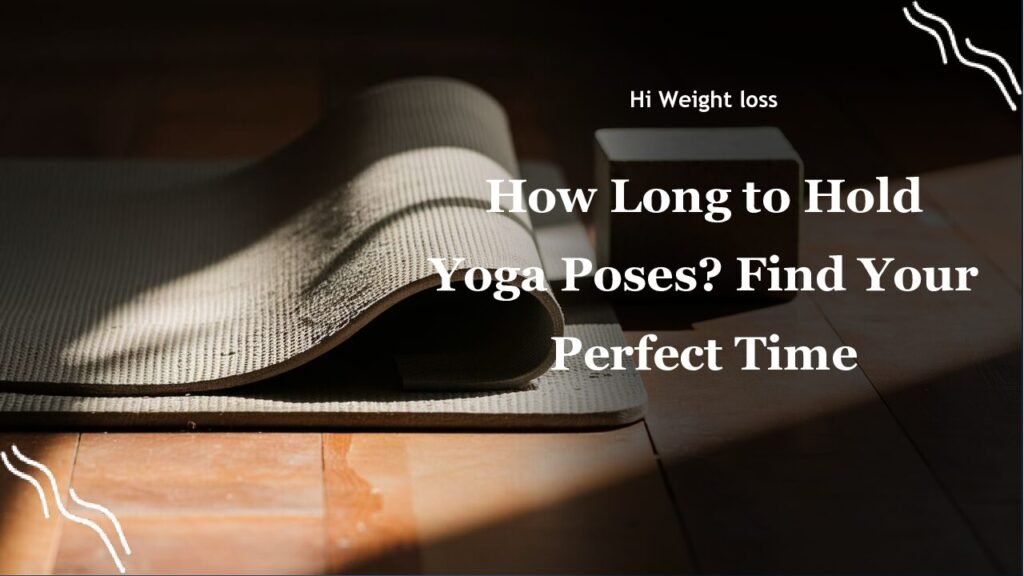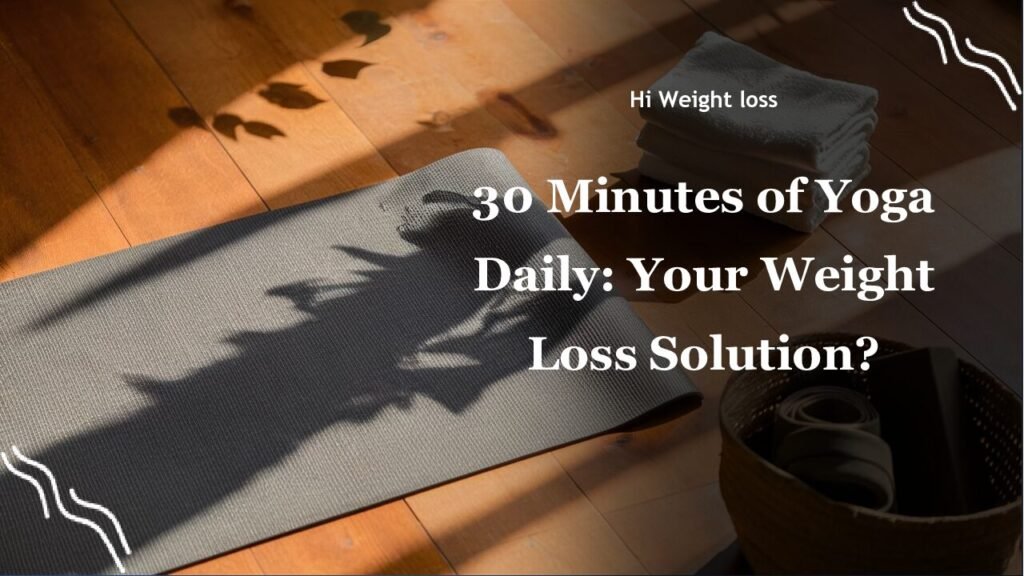“`
Have you ever found yourself in a yoga pose, wondering if you’re holding it for the right amount of time? It’s a common question, and the answer isn’t always straightforward, I’ve certainly felt that confusion many times during my early yoga practice. This article will guide you through the nuances of hold times in yoga, explaining how factors like your experience level, the style of yoga, and your body’s signals all play a role, so you can find your perfect pose duration. We’ll explore everything from beginner-friendly holds to extended durations in styles like Yin yoga, ensuring that you can practice safely and effectively, and that you’ll develop your own unique approach to the practice.
How Long Should I Hold a Yoga Pose?
Understanding the Basics of Yoga Hold Times
The length of time you should hold a yoga pose isn’t a rigid rule; it’s more like a flexible guideline. Generally, the duration of your hold is measured in breaths, not just seconds. One full breath includes one inhale and one exhale. This is because our breath is intimately connected to our mind and body; by monitoring the breath, you’re more likely to keep yourself safe.
I remember attending a workshop once where the instructor emphasized the importance of breath awareness over just timing the pose. That advice completely changed my practice, and I really noticed how much it helped to stay present. What that instructor taught me was that holding the pose for an exact time isn’t always the most important thing. So, let’s dive into the specifics.
Yoga Pose Hold Times for Beginners
If you are just starting out, you might be wondering, how long to hold a yoga pose for beginners? Well, a shorter hold time is often best when you’re still finding your way with poses. Holding a pose for about 2 to 4 breaths is generally recommended for beginners. This gives your body time to get acquainted with the pose, and it helps you build the needed flexibility and strength without pushing too hard.
I’ve seen many beginners in my classes get frustrated trying to hold a pose for too long right away. We’ve all been there! Starting slow and focusing on the correct alignment and breathwork will do wonders to avoid injury and discomfort. This shorter hold time allows you to concentrate on form and awareness of how your body feels in a posture.
General Guidelines for Hold Duration
When it comes to general hold times, we can classify them into short, medium, and long durations. A short hold is usually about 1 to 2 breaths, great for flowing sequences. A medium hold generally ranges from 3 to 5 breaths and is common in many yoga classes. A longer hold is considered 6 or more breaths, often used in poses where you are trying to find deeper stretches or focus on building endurance.
I recall being in a class where the instructor would give us various options for holds. “If you’re feeling good, stay for 5 breaths; otherwise, come out on 3 breaths,” she would often say. That kind of flexibility was so helpful, because it recognized that the needs of everyone in the class are different, and it was important to listen to your body and only stay as long as it felt comfortable.
How Yoga Style Influences Hold Times
Different styles of yoga come with their own sets of guidelines for pose durations. In Vinyasa, Power, and Ashtanga yoga, you’ll find dynamic sequences, with movement being the focus rather than extended holds. Here, poses are typically held for a short amount of time, around 1 to 5 breaths.
I remember attending a very fast-paced Power Yoga class once, and the flow was so intense! We were barely in a pose for a breath before moving onto the next. This fast-paced style is really about building heat and stamina through movement.
On the other hand, Hatha and Iyengar yoga usually involve slower movements, focusing on deeper stretches. In these styles, you’ll often hold poses for longer durations, sometimes up to 5 to 10 breaths or even more. These longer hold times help to target specific muscle groups, allowing you to delve into the pose more deeply.
How long to hold a yoga pose in Hatha yoga? In my experience with Hatha classes, it’s quite common for instructors to guide you through a slow, mindful hold for 7-8 breaths in standing poses. This slower style really highlights the importance of breath and awareness as you hold the pose.
And then we have Yin yoga, where poses are held for very long periods—up to 3-5 minutes or even longer. The idea here is to reach the deeper tissues, muscles, and fascia through extended, relaxed holds. It’s definitely a different kind of practice, focusing more on stillness and gentle stress.
A friend of mine who practices Yin yoga once told me that the long holds were really challenging at first, but she’s since found them incredibly relaxing and beneficial. It was so interesting to hear her perspective because I haven’t really ventured into Yin yoga much. It really helped me to understand that it really is a different experience from the other styles.
Personal Factors and Listening to Your Body
Ultimately, the best hold time for a yoga pose really depends on your individual needs and physical condition. It’s so important to listen to your body. If you experience any discomfort or pain, it’s time to gently release the pose. Your breath is another critical indicator; if you find that you’re losing your connection with your breath, that’s a sign to slow down and adjust the hold time accordingly.
I can remember pushing through pain early on in my practice, thinking I had to hold the pose to “get the most out of it”, and how much it harmed my progress. I eventually came to understand that there really is no benefit to forcing myself, and it’s always best to stop and modify the pose when something doesn’t feel right. If you’re feeling any sort of pain or discomfort, you should always pull back.
Flexibility Goals and Hold Times
If your goal is to improve flexibility, longer hold times can be beneficial. How long to hold a yoga pose for flexibility? Well, when you are aiming for flexibility, you will need to hold poses for 5 or more breaths, maybe even longer in styles such as Yin. The longer holds allow your muscles to release tension and become more pliable. However, always ensure you are doing this without pushing yourself to the point of pain or discomfort.
When I first started yoga, I would focus on holding poses with my breath and not really think much about my body. I now realize it is not only about the duration of the hold, it is also about staying relaxed, which in turn allows your body to really open and grow in flexibility. The important thing is that you are relaxed in the pose, otherwise the pose will be much more difficult to hold onto, and not be as effective in increasing your flexibility.
Here’s a table summarizing the different yoga styles and their associated hold times:
| Yoga Style | Typical Hold Times (Breaths) |
|---|---|
| Beginner | 2-4 |
| Vinyasa/Power/Ashtanga | 1-5 |
| Hatha/Iyengar | 5-10+ |
| Yin | Up to 3-5 minutes or more |
Remember, these are just guidelines. You have the final say in what feels good for your body.

Finding the right hold time is very similar to tuning an instrument. It can be a process of adjustments and exploration, and can vary depending on the needs of your body.
It really is important to approach every pose with mindfulness and a deep connection to your breath, and to give your body the space it needs to fully benefit from your practice.
Conclusion
In summary, determining how long to hold a yoga pose is a very personalized journey, not a one-size-fits-all situation. For beginners, holding poses for 2-4 breaths is a great start, allowing time to focus on alignment. As you become more experienced, you can start to adapt your hold times based on the specific style of yoga you are practicing, ranging from the shorter holds of Vinyasa yoga to the extended durations in styles like Yin. Remember to listen to your body, and adjust the hold time based on how you feel, always prioritizing your breath and awareness in the practice.
The key takeaway is to engage with yoga with kindness and patience, focusing on alignment and the way you breathe. By practicing mindfully, you’ll naturally discover the perfect hold time for every pose and achieve the results you want. So go ahead, get on your mat, and explore. And don’t forget to share your experiences in the comments below, or share this article with a fellow yogi!
FAQ
Can holding a pose too long cause injury?
Yes, holding a pose for too long without proper alignment, or pushing through pain can indeed lead to injury. It’s crucial to listen to your body and release the pose if you experience any discomfort.
Is it okay to modify a pose if I can’t hold it for the recommended time?
Absolutely! Modifying a pose is a sign of mindful practice. It is always best to find a variation of the pose that feels right for your body and will not cause you any pain.
How does breath relate to hold time?
Your breath is a critical component. If you lose the connection with your breath, that’s your body’s way of saying that you may need to slow down and adjust the hold time. Ideally you want to keep the breath smooth and steady.
Do hold times differ in different yoga styles?
Yes, hold times can vary quite significantly across yoga styles. For example, Vinyasa yoga typically involves shorter holds, while Yin yoga uses much longer holds.
Can I increase hold times gradually over time?
Yes, and it’s very much recommended that you gradually increase your hold times as your body becomes stronger and more flexible. Always be patient with your practice and focus on quality over duration.
“`



